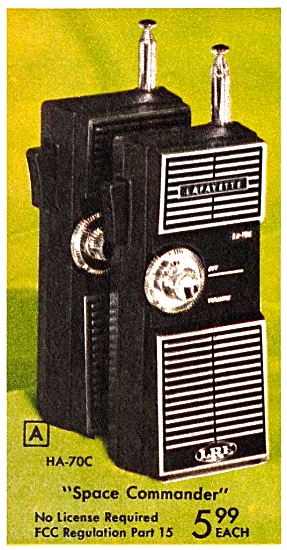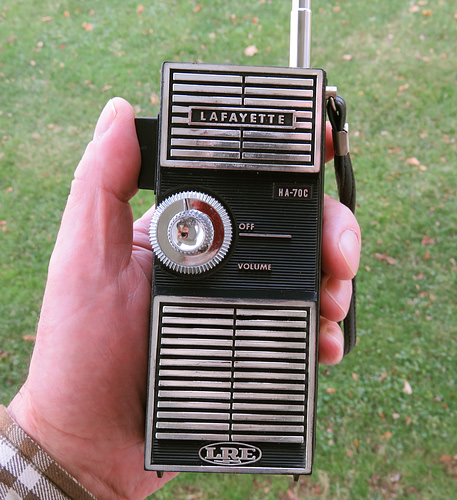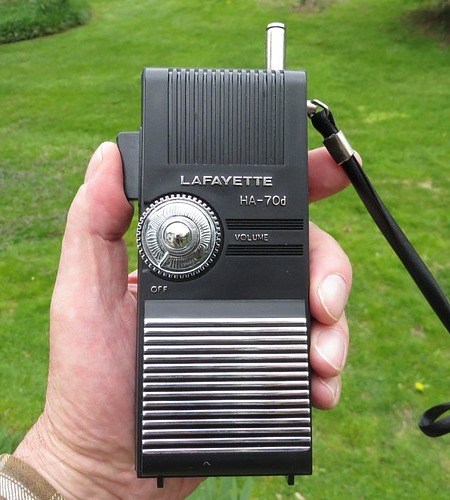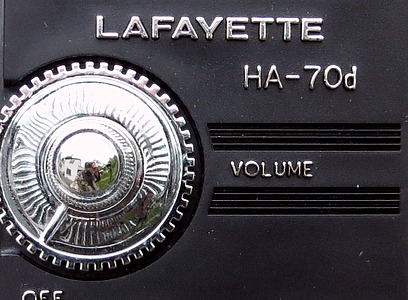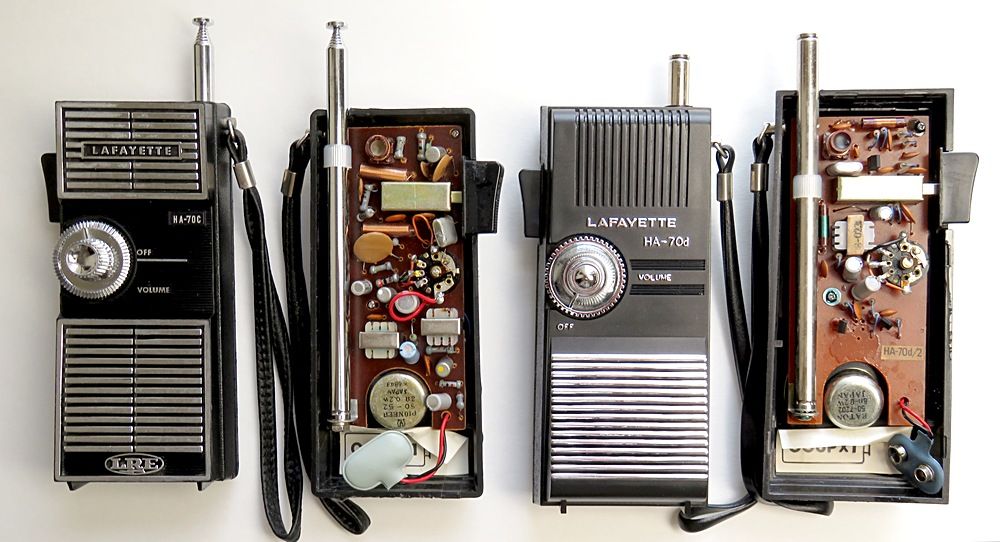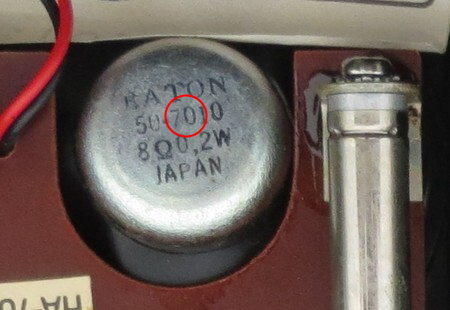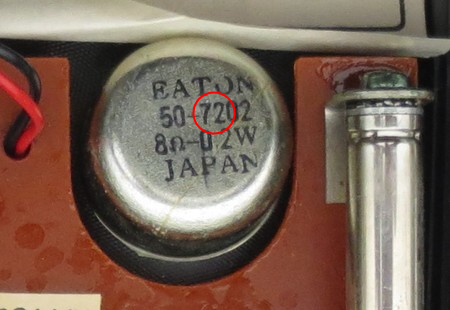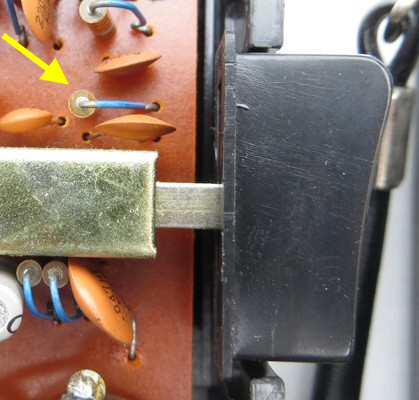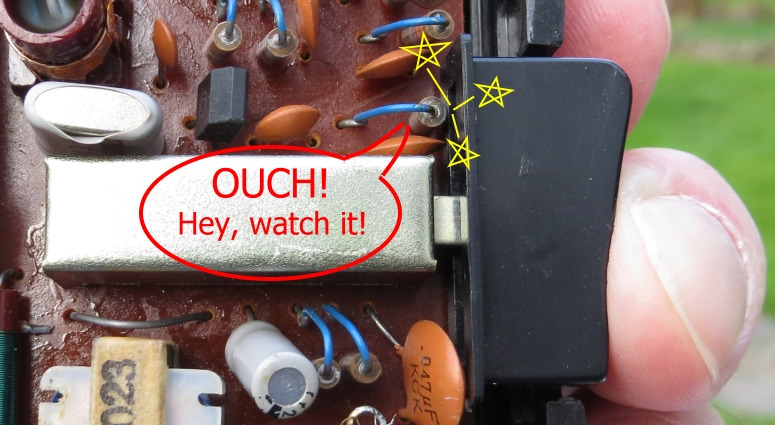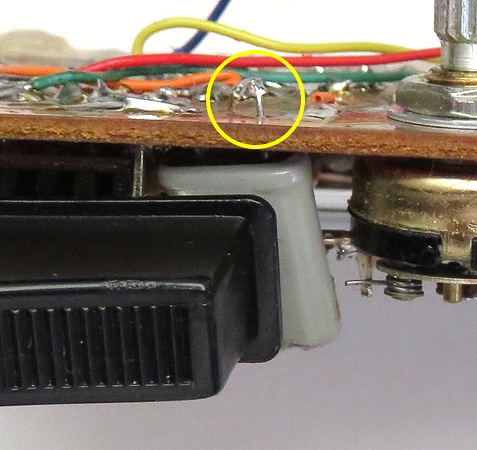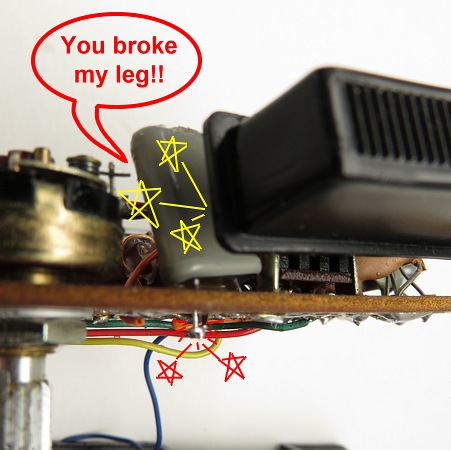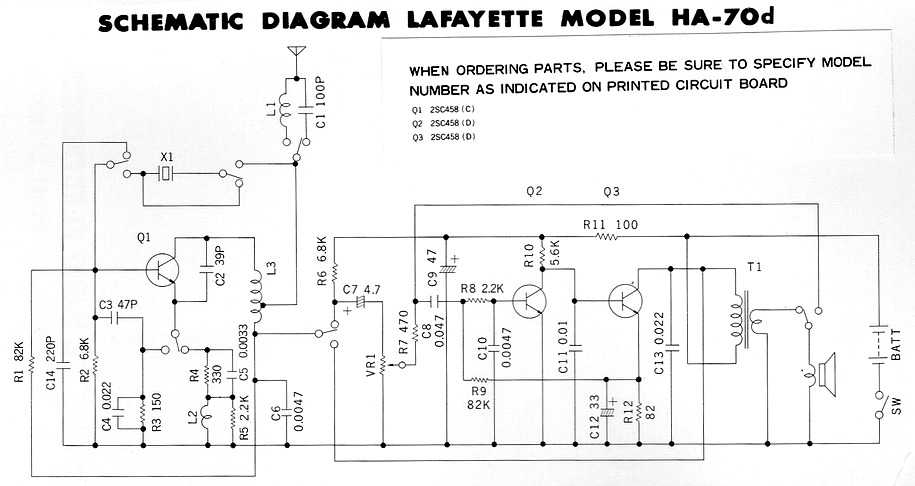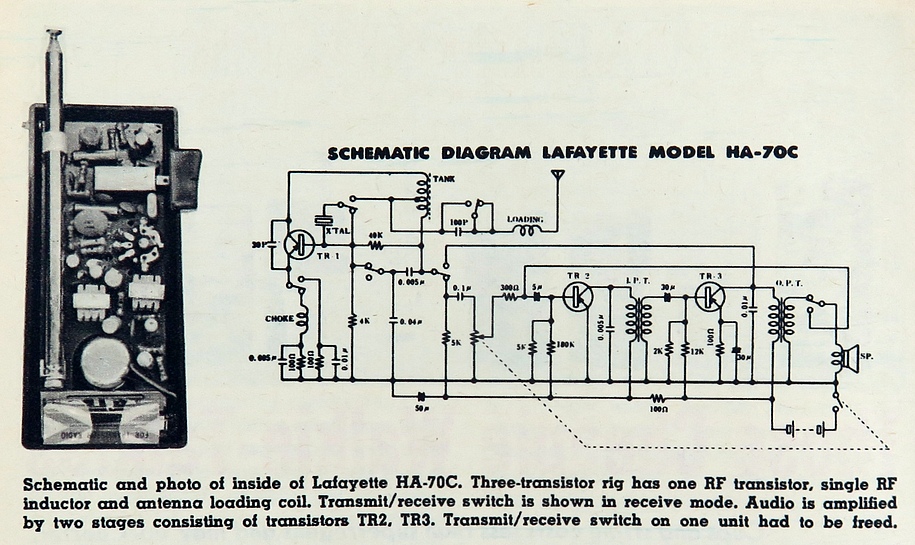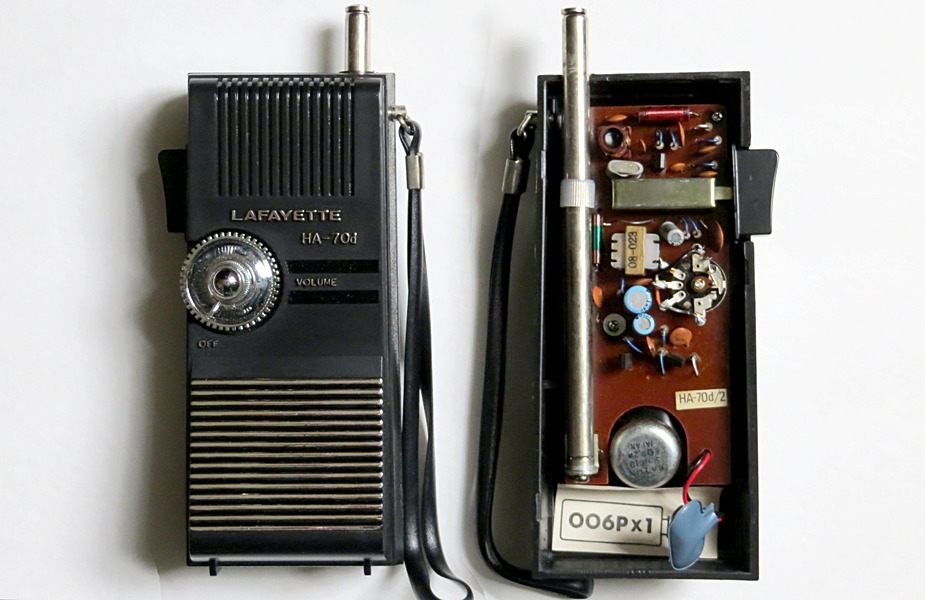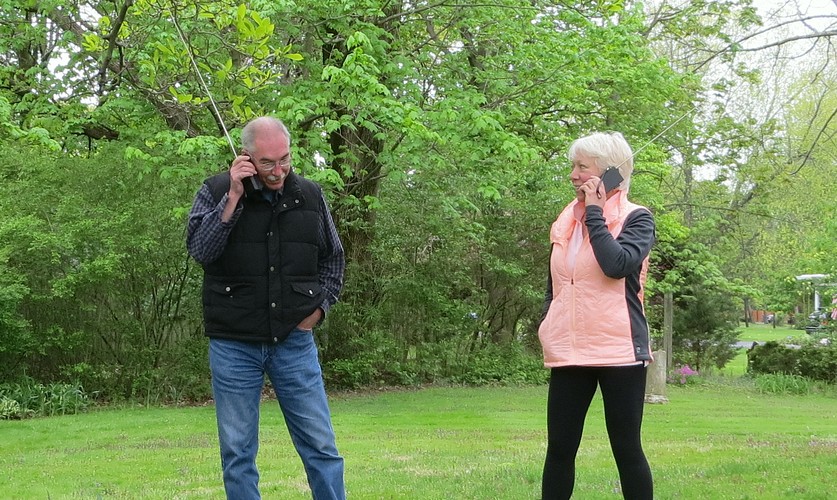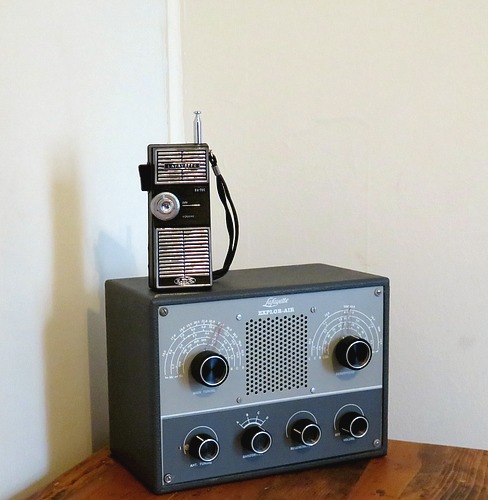 |
The "Astro
Commander" walkie-talkie
(Also known as the "Space Commander") |
 |
|
|
| Back to the Lafayette Space
Commander... |
| |
|
|
| What did you get for $5.99? |
| |
|
|
Let's open the HA-70d box! We've got a
walkie-talkie, manual and warranty card for a 90 day
warranty.
(Unfortunately, the HA-70C version didn't have a warranty card or
manual when I got them.) |
|
|
| |
 |
Let's look in the
manual. This is the very first sentence.
|
| That sounds cool!!!
It's authentic! It's used by the armed forces!! But... it
says it's similar
to the walkie-talkies used by the armed forces. Using that
logic, a balsa wood airplane is similar to a Stealth
Bomber used by the armed forces. |
Hmmmm.... Let's keep reading.
|
|
|
|
These things go for
3 city blocks! Wait. My brain saw "3 city blocks"
and ignored "1 city block." I only saw what I wanted
to see.
They do indeed go 1 city block. Nobody else on my block had
one, so I didn't really know till I tested these. And they
may indeed go for 3 city blocks - while in orbit around the
moon like it shows on the box.
Nowhere in the catalog or the paperwork does it state the
power input, but an article on "Those Cheapie Walkie-Talkies"
published in the January 1968 edition of Electronics
Illustrated states it is 80 milliwatts. The article also
says that they are of limited value unless under ideal
conditions, and they can't imagine where you would find such
conditions. As stated above, such conditions exist in orbit
around the Earth's moon.
Considering they only have three transistors, the fact that
they work at all is amazing! |
|
|
|
|
| So let's check out the
walkie-talkies. |
|
|
|
|
|
|
|
HA-70C |
|
|
|
HA-70d |
|
|
The quality of the plastic
housing is extraordinary for $5.99. But there may be a reason for
that, as well as a reason I bought the cheapest radio in the
Lafayette catalog. $5.99 in 1972 is the same as about $46.16 in
2025. So we're looking at an almost $50 walkie-talkie with sales
tax.
Charlie and Joe had Lafayette
Comstat 19s which they bought for $59.95. That's $462.00 today, and
that's why I didn't have a Comstat 19.
By the way, I paid $15 each for these in 2016, which is $2.61 in
1972 dollars. |
|
|
| |
|
|
|
| I really like the
look of the chrome on the black plastic |
|
|
|
|
| The HA70d has fewer parts! |
| |
| |
| Here are the two HA-70ds
with their backs off. There are a few minor differences between the
two. |
|
|
|
|
|
|
Using the "Theory of Dating
Lafayette Speakers" developed during the KT-135 restoration,
(described elsewhere on this site), these units were made two years
apart, in 1970 and 1972. In the later version, they seemed to have
resolved a major design flaw with a simple fix. |
|
|
|
|
|
| The resistor facing the Push
to Talk button on the 1970 model (left) has been reversed in the
1972 model (right). |
|
|
|
|
|
|
On the 1970 model, the Push to
Talk button bumped against the resistor every time you pressed it. I
wonder how long it would take to break the resistor off the circuit
board.
Maybe the fact that the resistor is turned around on the newer
version is an accident, but if you look at the other resistors, they
are ALL turned around. That's no accident. |
|
|
|
|
|
|
| On the HA70-C, they mounted the
crystal where the push-to-talk switch smashes right into it. In this
case, it lifted the copper trace off the circuit board! |
|
|
|
|
|
|
|
The little pamphlet states they are super sensitive, so I don't want
to hurt their feelings. The HA-70d employs three transistors. One
transistor does all the actual work as a radio transmitter and super
regenerative receiver. The other two are audio amplifiers for the
speaker in both transmit and receive mode.
They operate on Citizen Band channel 7. Most low power
walkie-talkies used channel 14. This was an advantage for the HA-70s
because channel 14 was filled with all sorts of noises, buzzing and
interference from all the other walkie-talkies and base stations
within range.
|
|
| Here's the HA-70d schematic. The
"Push to Talk" switch is in the receive position (not pushed). |
|
|
The circuit is ingenious. In the receive mode
it's a simple radio receiver with two stages of audio amplification.
When the "Push to Talk" button is pressed, Q2 and Q3 amplify the
voice coming into the speaker and feed it into the base of Q1, which
is now operating as a crystal controlled Hartley oscillator, using
coil L3 and crystal X1. It throws a loading coil into the circuit
(L1) and sends the output to the antenna. |
|
|
|
|
|
Here's the schematic of the HA-70C, compliments of
Electronics Illustrated January 1968.
They called it a "rig." Hahaha, I like that!
Click on the image for a larger version. |
|
|
|
So do they
still work after all these years??
|
|
|
|
We're going to test the
HA-70d's now, but did you notice anything funny about the outer
plastic case and the layout inside? They're used like an old
fashioned telephone handset. You hold the top part to your ear and
talk into the bottom part. There is, however, only one speaker! |
|
|
|
|
|
|
The big test! Look, we're holding the top of the units to our ears.
Can't break the habit, I guess.
For the HA-70d test we used carbon-zinc batteries, which is
what we would have had in them in the 1970's.
The unit made in 1970 transmitted nicely but was stone dead as far
as receiving anything. The unit made in 1972 received very well, but
didn't transmit.
Now you may well ask, how did we know the 1972 unit wasn't
transmitting if the 1970 unit couldn't receive? The answer is that
we tuned the shortwave radio to 27.035 MHz, CB radio channel 7, and
tested the walkie-talkies.
The "Push to Talk" switch was cleaned on the 1972 unit and the
volume control was cleaned on the other, which brought them both to
life. As a matter of fact, they worked great!
When one of us transmitted, the voice was surprisingly clear to the
other. Amazingly clear. And we both copied some guy who said his
10-20 was Valley Forge PA, 16 miles away. We stood about a city
block apart, proving 1/2 of the claim in the manual concerning their
range.
Both of the HA-70Cs were also tested
using the same carbon-zinc batteries. Neither one worked. Cleaning
the
'Push to Talk" buttons and volume controls had no effect. That's
OK, I only needed one for the picture below. |
|
|
|
|
|
|
|
|
|
| |


